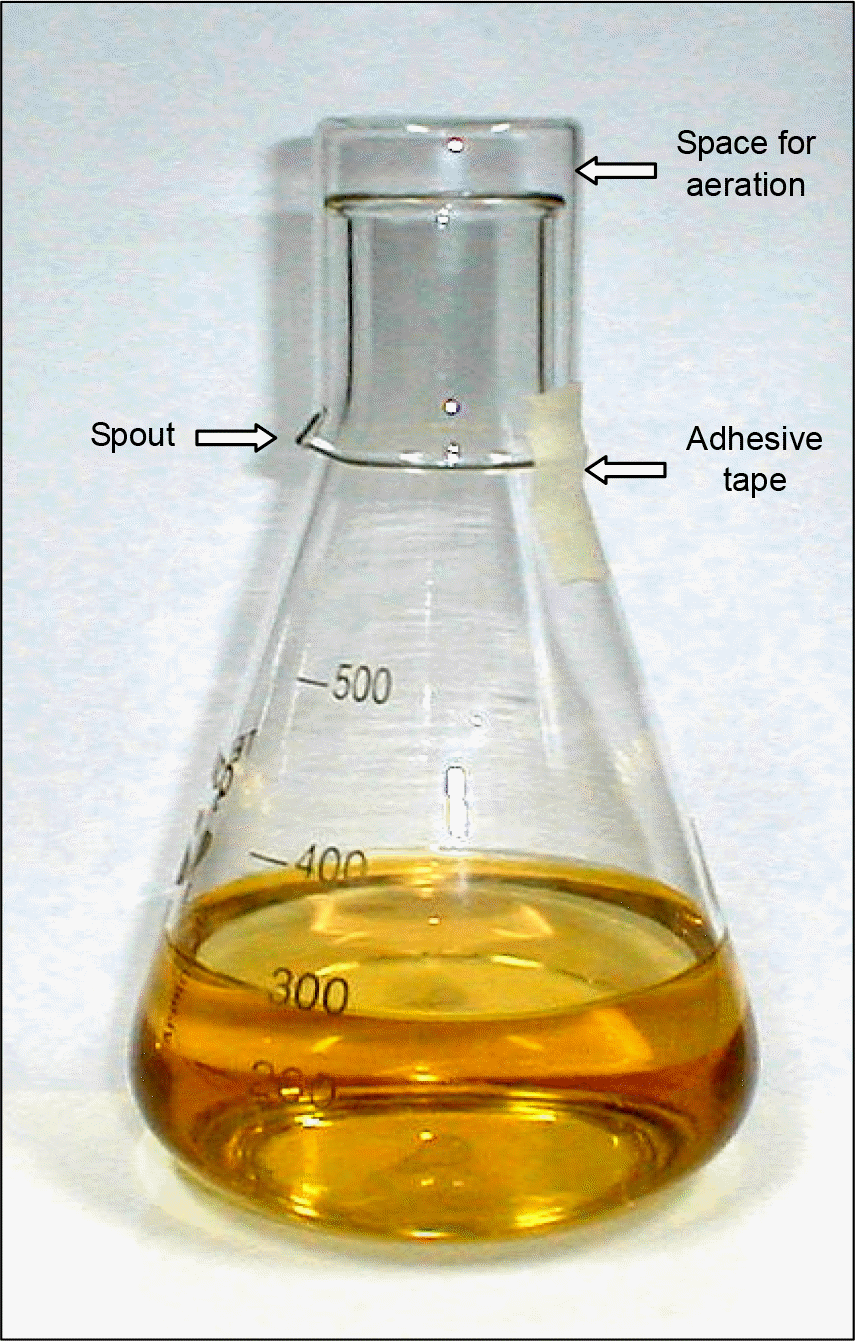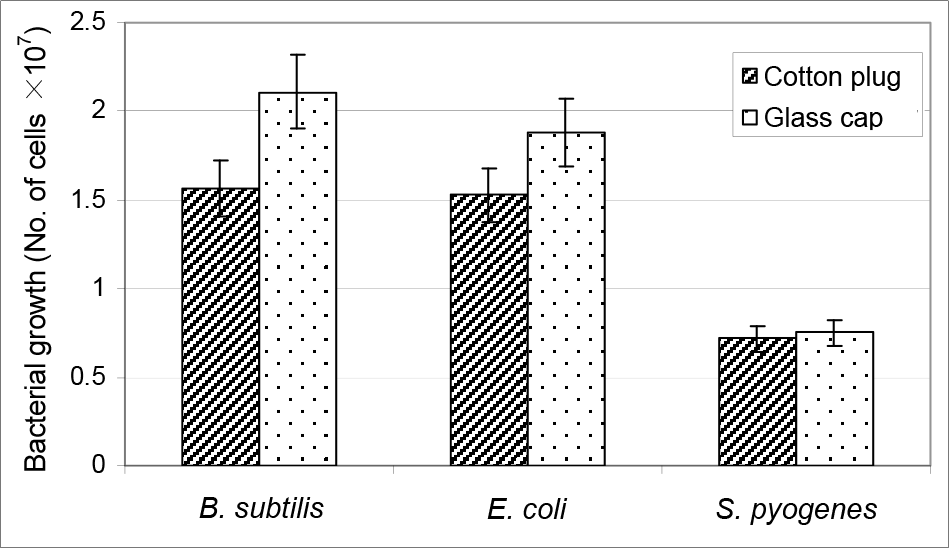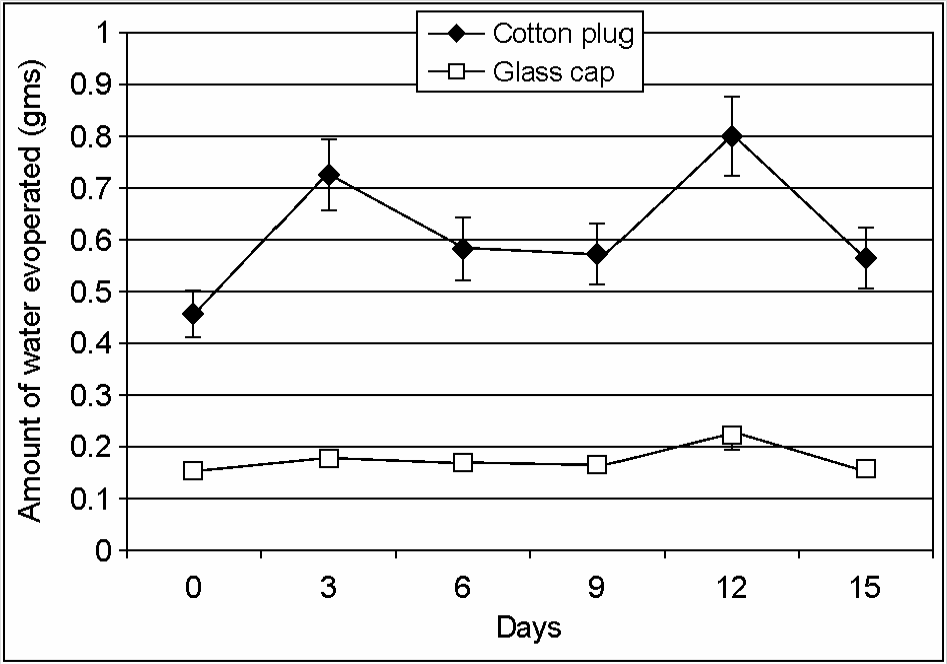Abstract
The use of cotton plug as closure of a bacterial culture flask had been reported to have many disadvantages such as inhibitory nature of cotton to certain microbes, chances of contamination during handling and accumulation of used cotton as biological waste. To overcome the disadvantages of cotton plugs, we have developed a new method of capping bacterial culture flasks. In the present study, three sets of experiments were conducted, one was to find out the efficiency of bacterial growth in culture flasks closed by either glass caps or cotton plugs and the second set was to find out the chances of getting contamination of sterile broth closed by either glass caps or cotton plugs and the third set was to find out the evaporation of water in conical flasks closed by glass caps or cotton plug. The results showed that the bacterial cultures closed by glass caps showed better growth with less chance of contamination and evaporation of the culture media. By this method, the bacterial culture work is made very simpler than using cotton plug.
REFERENCES
1). Schröder H., von Dusch T. Ueber Filtration der Luft in Beziehungen auf Fäulniss und Gährung. Ann Chem Pharm. 1854. 39:232–3.
2). Pasteur L. Memoire sur les corpuscles organises qui existent dans l'atmosphere. Examen de la doctrine des generations spontanees. Annales des Science naturelles, 4th Series, 1861; 16:5-98. Milestones in Microbiology: 1556 to 1940. translated and edited by. Brock Thomas D., editorASM Press;1998. p. p. 43–53.
4). Wright HD. A substance in cotton-wool inhibitory to the growth of the pneumococcus. J Pathol Bacteriol. 1934. 38:499–501.

5). Drea WF. Growth of small numbers of tubercle bacilli, H37, in Long's liquid synthetic medium and some interfering factors. J Bacteriol. 1942. 44:149–61.

7). Boyd DM., Casman EP. Inhibition of a strain of Brucella abortus by medium filtered through cotton. Public Health Rep. 1951. 66:44–9.
8). Pine L. Studies on the growth of Histoplasma capsulatum. I. Growth of the yeast phase in liquid media. J Bacteriol. 1954. 68:671–9.
9). Schultz JS. Cotton Closure as an Aeration Barrier in Shaken Flask Fermentations. Appl Microbiol. 1964. 12:305–10.

10). Koch R. Zur Untersuchung von pathogenen Organismen. Mitth. a. d. Kaiserl. Gesundheitsampte 1881; 1:1-48. Milestones in Microbiology: 1556 to 1940. translated and edited by. Brock Thomas D., editorASM Press;1998. p. p. 101–8.
11). Morton HE. Stainless-Steel closures for replacement of cotton plugs in culture tubes. Science. 1957. 126:1248.

12). Sutter RP. Comparison of Stainless-Steel Closures and Cotton Plugs in Maintaining Contamination-free Medium in Circulating Air. Appl Microbiol. 1969. 18:525.

13). Betts JI., Baganz F. Miniature bioreactors: Current practices and future opportunities. Microb Cell Fact. 2006. 5:21.
Figure 1.
A glass cap similar to ungraduated beaker is used here as a cap for nutrient broth medium. The spout of the beaker and the free space between mouth of the flask and the top, inner portion of the beaker ensures free gaseous exchange. The adhesive tape shown is used to hold the beaker with flask during autoclaving and shaking.





 PDF
PDF ePub
ePub Citation
Citation Print
Print




 XML Download
XML Download